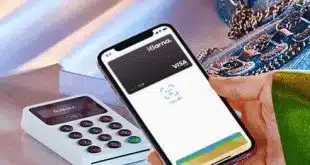One of the most aggressive—and worrisome—central bank digital currency models is a proposal from law professors Morgan Ricks and John Crawford and lawyer and former regulator Lev Menand that the Fed provide direct banking “FedAccounts” to consumers and businesses. It’s intended to improve payments efficiency and reduce the number of unbanked consumers. The direct CBDC model has appeal in being in some respects technologically simpler.
Since its 1913 creation, the Fed has relentlessly amassed more power as the central bank conducting monetary policy, as the paramount financial-system regulator, and as a payments operator. On its own prerogative, it decided to launch a real-time interbank-payments system called FedNow to compete with private-sector providers that it regulates, such as The Clearing House.

But now the FedAccounts proposed by Ricks, Crawford, and Menand would be state retail banking on a massive scale. Economist Larry White estimated an account-based digital dollar would require the Fed to increase its workforce twenty-fold.
Fed Chairman Jerome Powell thus far has been circumspect about the Fed launching a digital dollar, directly or through banks. Testifying on Feb. 11 to the House Financial Services Committee, Powell said “it’s very much incumbent on us and other central banks to understand the costs and benefits and trade-offs” of a digital currency. His exchanges with Congressman Bill Foster suggested Libra and the Chinese central bank’s digital yuan have brought CBDC to the fore.
The Fed is socializing the idea of launching a digital currency, much as it socialized developing FedNow. Public Choice Theory suggests the Fed will go for it. As with FedNow, if the Fed decides to develop a digital dollar, it’s likely to give Congress a courtesy briefing rather than seek authorization. The best outcome would be a digital Fed dollar distributed through, rather than directly and competing with, banks.
The private sector can and should play a major role delivering digital fiat currencies.
Stablecoins tied to fiat currencies, like Tether, TrustToken’s TrueUSD, Circle’s USD Coin, DAI, and the Universal Protocol Alliance’s UPUSD and UPEUR, don’t threaten central banks. These specialists have yet, however, to make a dent in mainstream payments.
Leading card networks, banks, and technology giants with the heft and trust to make an impact are in the mix as well.
The world’s largest electronic-payment network, Visa, has filed a patent application for a “Digital Fiat Currency.” Visa is well-positioned to support an electronic fiat currency through its bank licensees, albeit with thinner transaction economics than it enjoys with credit cards.
Banks have launched their own digital currencies. Signature Bank and Chase have token-based Signet and JPMCoin, respectively, focused on business-to-business payments. They’re backed by dollars on deposit. Wells Fargo Digital Cash will launch this year to support cross-border payments, substituting tokens for fiat currencies being transferred.
And Facebook is back. After the pummeling it took in 2019, the social-media Gargantua modified its digital currency, Libra, and its surrounding strategy to better navigate the regulatory and political gauntlet.
The Switzerland-headquartered Libra Association appointed HSBC’s chief legal officer, Stuart Levy, who previously was a regulator at the Treasury Department, as its chief executive. And it’s appointed the former director of the U.S. Treasury Department’s Financial Crimes Enforcement Network, Robert Werner, as general counsel.
Libra 2.0’s transaction ledger will be permissioned, making it less likely bad actors will get access. And, Libra stablecoins will be backed by each jurisdiction’s national currency. That will render them akin to electronic banknotes, which won’t threaten government monopolies in creating money.
While a range of central-bank and private-sector digital currencies will join the payments mix, physical cash isn’t going away. It’s anonymous, and doesn’t require electricity, connectivity, or electronic devices to use.
But digital fiat currencies will play a role in retail payments. The best outcome would be if they’re delivered by the private sector, vying for share with cash as well as traditional and alternative electronic payment systems like Mastercard, Visa, and PayPal.






